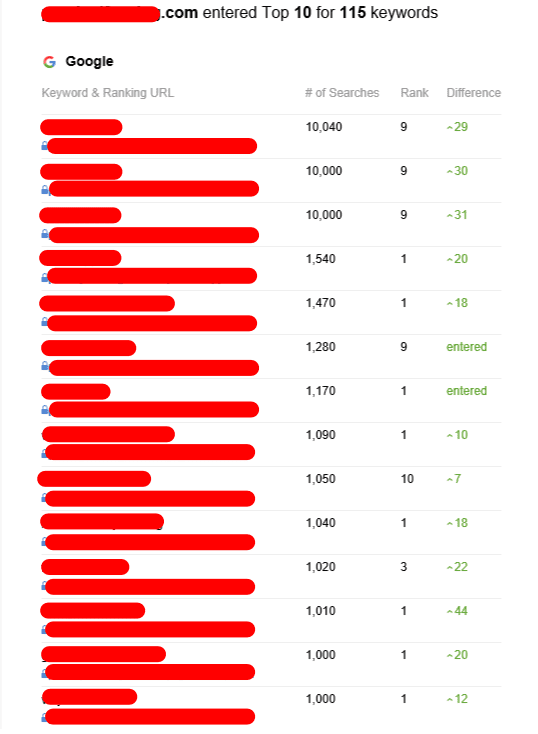Backlink Tier - The Hierarchy of Backlinks That Scale Your SEO Campaign
Backlink tier refers to the hierarchy of links you build to boost your SEO campaign. Each level gives you an extra layer of protection against Google's penalties.
To be successful You'll need to invest lots of effort and time. It's because Google takes weeks to discover new backlinks and evaluate their quality on the basis of each link.
First-Tier Links
The first layer of links that lead to your piece of content should be high-quality dofollow backlinks from trusted websites. These links are known as Tier 1 backlinks and act as the foundation of your link building strategy. They will give your website enough domain authority to rank well on search engine result pages. If, for instance your blog article was published on HubSpot and also included a tier-one link to SearchEngineLand’s compilation of Link Building Statistics then SearchEngineLand’s ranking on the web will benefit from the link equity that HubSpot gave away.

The second tier of backlinks could be a bit more varied and can contain low-quality sites, like spammy forum posts or bookmark sites with low value and directories. The main objective with Tier 2 is to create high-quality content that links to your first-tier links. This is because quality content will enrich the article it is placed within, and not make it appear as a separate item for SEO purposes.
To create an effective tiered link building strategy, you'll need to invest in creating quality content and using tools like RankerX or GSA. However the time and effort that is spent manually executing an effort to build a tiered link could be worth it in terms of the higher rankings that result from having a well-organized backlink pyramid.
Second-Tier Links
Tiered link building is designed for users to navigate through external sites and then reach your website. In order to achieve this it's essential to select second-tier backlink sources that are relevant to your business and website. Blog posts from guest bloggers are more effective in this regard than account profiles since they offer valuable content that people will want to read.
In general, you should avoid using links of tier 2 on forums or other sites that aren't of high-quality. Choose pages that are of high-quality of articles from industry or guest posts. These links appear more natural and have greater impact on your search engine's ranking. Additionally they are more likely to be considered by Google as having passed link equity, which could increase their ranking value in SERPs.
If you are planning to build tier two links with the intention to improve your SEO ranking You must be aware of the difficulty to get these types of high-quality backlinks on your own. It can take several months to send guest posts to top-quality publishers, and even longer them to get published. Additionally, it may take weeks to see the outcomes of your efforts when it comes to creating new traffic and online conversions.
Many SEOs utilize automated tools to create second-tier backlinks. This approach could be in violation of Google's Webmaster Guidelines and could result in being penalized.
Third-tier Links
This level is home to a huge amount of links, many of which are borderline spammy. They are posted on social media platforms, as well as user-generated content sites such as Quora. They help with the indexing of tier two links, but they don't transfer any link equity to the promoted resource. These are usually nofollow links. At the moment, marketers are more focused on quantity than quality. They use tools to share an massive amounts of hyperlinks on forums, in the comments sections of blog articles and posts in directories and similar locations. This is where tiered link building is a grey area and violates Google's webmaster guidelines.
Tiered link-building campaigns require an enormous amount of time and effort to succeed. It can take days or even months for Google to rank a single backlink, and after that it may take weeks or even months to be able to see a significant impact on SEO. Marketers should be patient, and utilize a carefully-planned content strategy.
Marketers should avoid using too many automated tools to achieve this type of linking. These tools can violate rules regarding search engine optimization and lead to penalties. It is better to manually select and publish hyperlinks on relevant donor websites instead of using automated services such as GSA or RankerX. This will stop search engines from penalizing your marketing for links that are not of high quality.
tiered backlinks -Tier Links
Tiered link building remains an effective method to improve ranking of websites. However, since Google has made significant efforts to eradicate "black hat" SEO practices, tiered linking techniques have suffered a blow.
They are regarded as gray-hat SEO techniques and can be penalized for their artificial use. Tiered backlinks are backlinks constructed on various levels of a pyramid. The primary goal of these backlinks is to improve the ranking of a resource promoted in search engine results. The page promoted will be more prominent than the competition and receive more organic traffic.
The quality of the backlinks in this tier takes an eminent decline and are usually nofollow. Additionally the tier can be comprised of low-quality directories, media profiles and article networks. Links can be generated by hand or through automated strategies, but they must remain diversified in terms of the domains as well as the niches and their relevance.
These backlinks, in addition to being of poor quality and nofollow may also be a source of trouble in the event that they aren't sufficiently diverse. Google has a team of hound dogs that are highly trained and are always looking for patterns and strategies within backlink profiles. If they are found, not only could the link-building team be penalized but also its clients.
